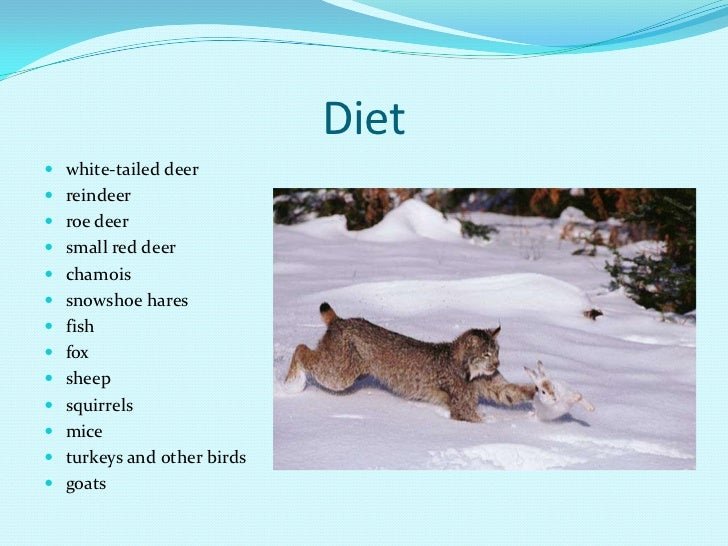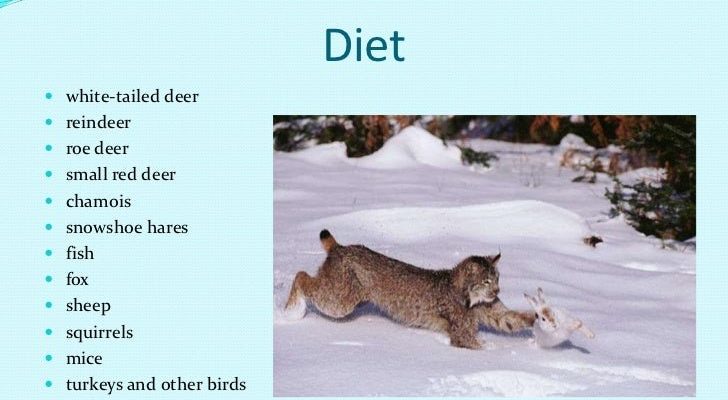
The Canada lynx primarily exists in remote, secluded regions, making them elusive and fascinating creatures. Think of them as nature’s ninjas, silently blending into their environment while scouting for food. Their hunting methods are not just interesting; they’re also crucial for their survival—especially when their primary prey, the snowshoe hare, goes through its population cycles. So, grab a cup of coffee and let’s dive into their unique dietary habits and clever strategies.
Understanding the Canada Lynx Diet
The Canada lynx has a diet that is quite specific and heavily reliant on one main prey: the snowshoe hare. Imagine a chef specializing in one dish; the lynx has perfected the art of hunting hares, making it the centerpiece of their menu. While they are technically carnivorous, Canada lynxes are opportunistic feeders, which means they’ll eat other animals if hares are scarce. This flexibility is vital for their survival, especially during lean times.
Typically, the lynx will hunt in small bursts, moving stealthily through the snow. Their long legs and large, furry paws act like natural snowshoes, allowing them to traverse the winter landscape with ease. Besides hares, they might snack on small rodents, birds, or even the occasional deer fawn if they’re really hungry. You might be surprised to know that their diet can shift based on seasonal changes, proving that adaptability is key in the wild.
The Importance of Snowshoe Hares
Snowshoe hares are the lifeblood of the Canada lynx’s diet. These hares have adapted to the cold, growing white fur for camouflage in the winter months. The lynx, in turn, has evolved to hunt them efficiently. The relationship between these two species is a classic predator-prey dynamic, intricately balanced over time.
During high population years of hares, the lynx’s hunting becomes more efficient. It’s like a feast! However, when the hare population declines every 10 years or so, the lynx must adapt. Here’s the thing: if they don’t, their numbers can decline as well. It’s a delicate dance of survival, where each species relies heavily on the other. This cycle illustrates how interconnected ecosystems can be, and understanding this relationship helps us appreciate the Canada lynx even more.
Hunting Strategies of the Canada Lynx
So, how does the Canada lynx catch its food? Their hunting strategy is a combination of stealth, patience, and quick bursts of energy. Imagine a cat that’s great at hide-and-seek; the lynx relies on its coat’s camouflage and the snow’s natural silence to stalk its prey. They often utilize the element of surprise, waiting quietly until the perfect moment to pounce.
One common tactic is to sit still and observe the surroundings. The lynx will watch for the movement of the snowshoe hare, darting out at just the right moment. Their keen eyesight and excellent hearing play vital roles in this process. When they move, it’s often a stunning display of agility and strength—quick lunges and powerful leaps that can catch even the most alert hare off-guard.
The Role of Territory in Hunting
Canada lynxes are territorial animals, meaning they establish a specific area where they hunt and live. This territory is critical for their survival as it essentially determines how much food they can access. The size of their territory can vary widely, from 20 to 100 square miles, depending on hare population density and habitat quality.
Establishing and maintaining this territory involves marking it with scents and calling out to communicate with others. Here’s the thing: if a lynx’s territory overlaps with another’s, competition for food can become fierce. It’s a bit like living in a bustling neighborhood where everyone is vying for the best restaurants. In areas where hare populations are high, lynxes can thrive, while in less favorable conditions, they may struggle.
Seasonal Changes and Dietary Adaptability
As seasons change, so do the hunting practices and diets of Canada lynxes. In winter, they rely heavily on snowshoe hares, while in spring and summer, they might take advantage of other prey like birds and small mammals. This adaptability is essential, especially for a creature that faces the unpredictability of nature.
During the warmer months, food is more abundant, and lynxes can diversify their diet. Hunting strategies might also change; they may use different methods to catch nimble prey like birds. The adaptability in their hunting techniques showcases their intelligence and resourcefulness—qualities that are crucial in the wild.
Conservation Status and Its Impact on Hunting
The Canada lynx is classified as a species of concern in some areas, primarily due to habitat loss and climate change. As their environment shifts, their hunting grounds can become limited, and the populations of snowshoe hares may fluctuate more dramatically. Understanding this conservation status is essential as it directly affects hunting strategies and their overall diet.
Efforts to protect their habitats and sustain hare populations play a critical role in ensuring the survival of these majestic cats. By setting aside wilderness areas and promoting biodiversity, conservationists help maintain the delicate balance that allows the Canada lynx to thrive and continue their important role in the ecosystem.
The Canada lynx is more than just a beautiful feline; it’s a vital component of its ecosystem, deeply connected to the snowshoe hare and the habitat it roams. Their unique hunting strategies, reliance on prey, and adaptation to seasonal changes highlight the magnificence of nature’s design.
Understanding the diet and hunting behaviors of the Canada lynx not only gives us insights into their lives but also reminds us of the importance of conservation efforts. By working to protect their habitats, we can ensure that these elusive hunters continue to thrive in the wild, gracefully navigating their snowy domains for generations to come.

